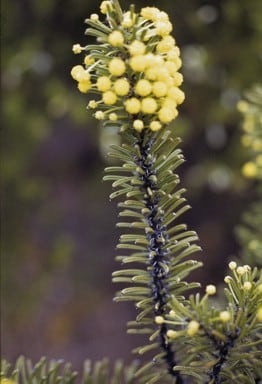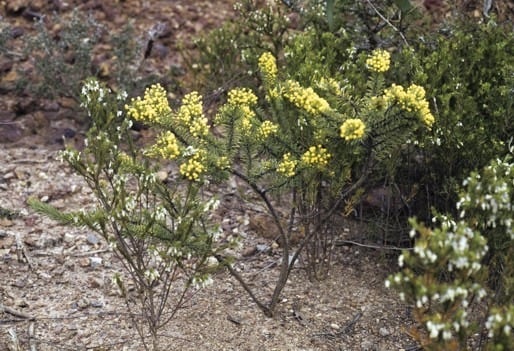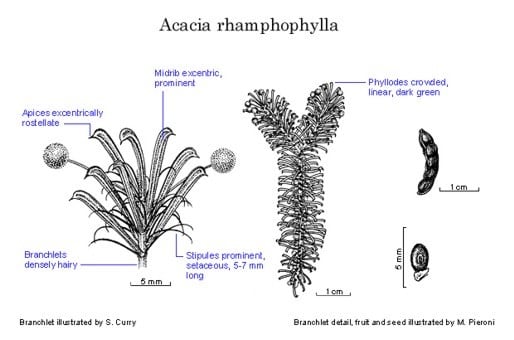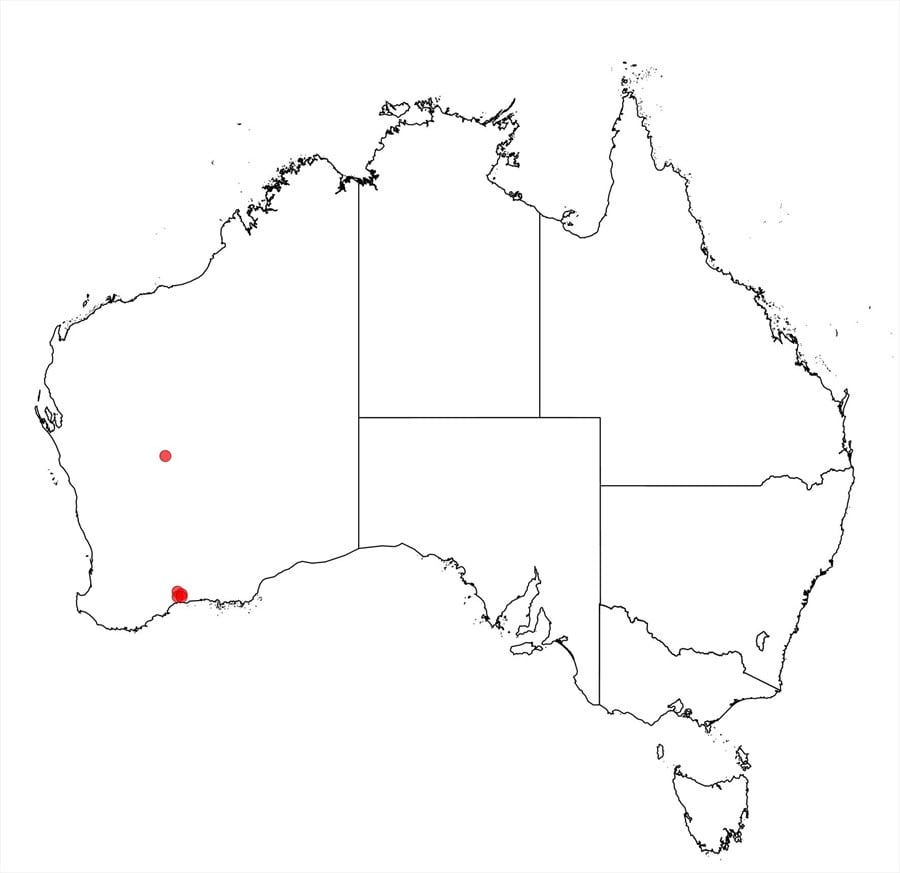Acacia rhamphophylla Maslin
WATTLE
Acacias of Australia
Family
Fabaceae
Distribution
A rare species endemic in the Ravensthorpe Ra., W.A.
Description
Spreading open subshrub 0.2–0.4 m high. Stems slender, dark grey. Branchlets densely pubescent. Stipules setaceous, 5–7 mm long, recurved. Phyllodes crowded, linear, 11–17 mm long, 1–1.5 mm wide, narrowed at base, excentrically rostellate, dark green, glabrous but pulvinus pubescent adaxially; midrib near abaxial margin and prominently raised; adaxial margin 2-nerved, thick and nerve-like. Inflorescences rudimentary, 1-headed racemes with axes > 0.5 mm long; peduncles 8–13 mm long, glabrous, recurved in fruit; basal bract cucullate-navicular; heads globular, 2.5–3 mm diam., 12–16-flowered, light golden. Flowers 5-merous; sepals free. Pods subterete, 10–15 mm long, thinly crustaceous, blackish. Seeds longitudinal, oblong-elliptic to ovate, 2–2.5 mm long, c. 1.5 mm wide, shiny, dark brown; aril pileiform.
Habitat
Grows in rocky or sandy clay in open shrub mallee.
Specimens
W.A.: Ravensthorpe Ra., K.Newbey 9523A and 9523A-1 (MELU, PERTH).
Notes
Appears most closely related to A. laricina and A. cedroides. Acacia laricina has often longer, pungent phyllodes that are continuous on the branchlets, appressed-pubescent peduncles, cream to pale yellow heads with fewer flowers, united sepals and larger pods and seeds. Acacia cedroides has finely striate-ribbed branchlets, verticillate phyllodes, shorter, linear-triangular stipules, united sepals and much larger seeds. Also allied to A. pusilla, another Ravensthorpe Ra. endemic, which has smaller, subterete, nearly nerveless phyllodes, shorter stipules, shorter peduncles bearing heads with fewer flowers and coiled pods (the pods of A. rhamphophylla are curved and sometimes only slightly so).
FOA Reference
Data derived from Flora of Australia Volumes 11A (2001), 11B (2001) and 12 (1998), products of ABRS, ©Commonwealth of Australia
Author
B.R.Maslin
This identification key and fact sheets are available as a mobile application:
URL: https://apps.lucidcentral.org/wattle/
© Copyright 2018. All rights reserved.










